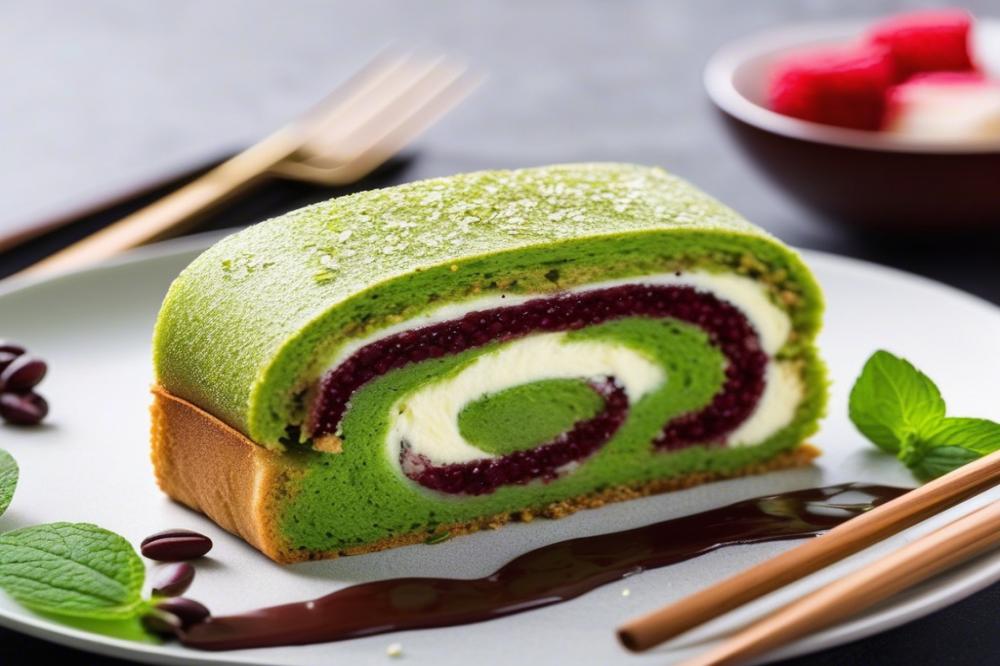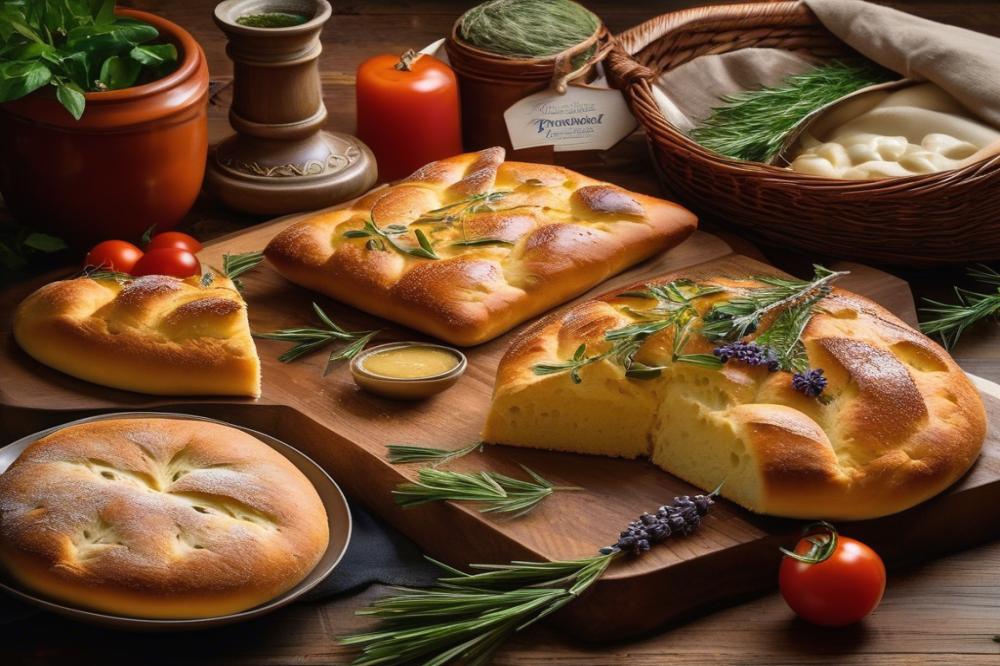Exploring Asian Style Baking
Asian style baking, particularly in Japanese cuisine, presents a delightful world of flavors and textures. This culinary tradition melds the beauty of presentation with the harmony of taste. Among the many sweet treats that emerge from this style, the Green Tea Swiss Roll stands out for its delicate balance of ingredients.
Bakery enthusiasts in Japan have embraced the use of green tea, or matcha, as a cornerstone of their desserts. This ingredient adds not only flavor but also a rich green hue, creating a feast for the eyes. Meanwhile, Azuki Beans have found their way into numerous recipes, often sweetened and transformed into paste. This ingredient is celebrated for its subtle sweetness and creamy texture, making it a favorite in various cakes and pastries.
Bringing these elements together, a roll cake filled with green tea and Azuki Bean is more than just a dessert. It captures the essence of Japanese baking, merging tradition with contemporary flavors. The blend of earthy matcha with the gentle sweetness of azuki beans offers a taste sensation that is both refreshing and satisfying.
For those seeking to explore this delightful treat, the Green Tea Swiss Roll offers an excellent entry point. It invites bakers and dessert lovers alike to experience the magic of Japanese flavors and techniques. As flavors mingle, this dessert informs the palate and invites you to savor each bite.
Understanding Green Tea Swiss Roll

A Green Tea Swiss Roll is a light and fluffy dessert that combines a sponge cake with green tea flavors. This delightful roll cake is often filled with cream, but it can also contain sweet beans like azuki. The cake’s texture is soft, making it a pleasure to eat. Its vibrant color comes from matcha powder, a finely ground green tea that is popular in Japanese cuisine.
Matcha plays a crucial role in both flavor and color. When added to the cake batter, it gives a rich green hue that appeals to the eyes. The flavor is earthy and slightly bitter, which balances perfectly with sweet fillings. Many bakers use quality matcha to bring their creations to life. The careful selection of this powder enhances the overall taste profile of the dessert.
The Swiss roll has a significant place in Asian desserts. This cake style has roots that date back to European baking, but it has been embraced and adapted in various Asian cuisines. In Japan, for example, the Swiss roll symbolizes celebration and hospitality. When served during special occasions, it reflects the pride and care that bakers put into their recipes.
Incorporating azuki beans into the filling adds an extra layer of charm. These beans contribute a sweet, smooth texture that complements the cake’s softness. Enjoying the combination of green tea and azuki creates a delicious contrast that resonates with many dessert lovers. As a result, this dessert has become a beloved sweet treat in many households.
Creating a Green Tea Swiss Roll requires attention and skill in baking. It involves whipping egg whites to achieve the perfect airy texture. The green tea flavor must be balanced so that it doesn’t overpower the sweetness. Every bite tells a story of tradition and creativity, showcasing the harmonious blend of flavors. This roll cake is more than just a dessert; it’s an experience that connects people through food.
Ingredients for Green Tea and Azuki Bean Swiss Roll

Creating a delightful roll cake requires precise ingredients. The following list outlines everything needed for this mouthwatering dessert. Each component plays a crucial role in achieving the right texture and flavor.
1. Cake Flour (100g) – Cake flour is finer than all-purpose flour. It helps produce a light and airy sponge that rolls easily without cracking.
2. Matcha Powder (10g) – This finely ground green tea adds both a vibrant color and a rich flavor. The distinctive taste of green tea is essential for this Japanese cuisine delicacy.
3. Eggs (3 large) – Eggs are fundamental in most baking recipes. They provide structure and moisture, contributing to the cake’s overall richness.
4. Granulated Sugar (100g) – Sugar sweetens the cake. It also helps in creating a nice crust while supporting the cake’s rise during baking.
5. Azuki Bean Paste (200g) – This sweetened bean paste is a hallmark of azuki bean desserts. It provides a delightful contrast to the earthy notes of the matcha and adds a sweet filling that complements the cake perfectly.
6. Heavy Cream (200ml) – Whipped cream adds a creamy texture and lightness to the roll. It can be flavored or sweetened to enhance the overall experience of this delightful treat.
7. Baking Powder (1 tsp) – This leavening agent helps the cake rise, making it fluffy. It ensures that the sponge has the ideal consistency for rolling.
All these ingredients combine harmoniously to create a unique recipe that stands out among other sweet treats. Use fresh matcha for the best flavor, and don’t skip the azuki bean paste if you crave the authentic taste of this classic dessert. Enjoy the process of baking this beautifully crafted cake!
Step-by-Step Recipe Method

Creating a delightful Green Tea Swiss Roll involves a few key steps, from preparing the batter to making the azuki bean filling. Let’s dive into the delicious process.
Preparing the Cake Batter
Start by preheating your oven to 350°F (175°C). This step is crucial for baking a light and fluffy cake. Next, sift 1 cup of all-purpose flour and 2 tablespoons of matcha powder into a bowl. Mixing these dry ingredients together helps distribute the green tea flavor evenly throughout the cake.
In another bowl, whisk together 4 large eggs and ¾ cup of granulated sugar. This mixture should become pale and fluffy. This process might take around 5 minutes with an electric mixer. After achieving the right texture, gently fold in the sifted flour and matcha combination. Use a spatula for this to avoid deflating the batter.
Baking the Cake
Prepare a 15×10-inch baking sheet by lining it with parchment paper. Pour the cake batter into the pan, spreading it into an even layer. Bake for 12 to 15 minutes. The cake is done when it springs back to the touch and is lightly golden. Time management here is important to avoid over-baking.
As the cake bakes, prepare a clean kitchen towel sprinkled with powdered sugar. Once baked, remove the cake from the oven and turn it out onto the sugared towel while it’s still hot. This method helps prevent sticking. Carefully peel off the parchment paper.
Preparing the Azuki Bean Filling
For the filling, you’ll need about 1 cup of sweetened azuki bean paste. You can make this from scratch by boiling dried azuki beans until soft, then mashing and mixing them with sugar. Alternatively, store-bought versions are available and can save some time.
Once your paste is ready, set it aside to cool slightly. This cooling step is essential to avoid melting the cake when spreading.
Rolling Technique
Now comes the fun part—rolling the cake. Begin by gently lifting one edge of the towel and carefully rolling the cake away from you. Roll it tightly but not too tight; you want it compact but flexible enough to hold its shape. Allow the cake to cool completely in this rolled position.
After about 30 minutes, carefully unroll the cake. Spread the azuki bean filling evenly across the surface. Then, roll the cake back up without the towel, using a firm but gentle hand. Slice the ends for a neat finish.
This dessert embodies the charm of Japanese cuisine with its unique flavors. Now, it’s ready to be served. Savor your beautiful roll cake and enjoy the delightful combination of sweet treats.
Serving Suggestions and Variations
So, you’re ready to enjoy a delicious slice of Green Tea Swiss Roll. Serving it can enhance the experience significantly. Consider pairing it with light whipped cream. The sweetness of the cream complements the earthy tones of matcha beautifully. Fresh fruits, such as berries or sliced strawberries, offer a refreshing contrast. They not only add vibrant color but also provide a juicy burst with every bite.
When it comes to variations, creativity can take center stage. Try incorporating other flavors into the recipe. For instance, adding a hint of vanilla can round out the taste. Alternatively, some toasted coconut can create an entirely new profile. If you’re feeling adventurous, you could use different fillings, like a light mousse or custard. A layer of azuki bean paste could bring a lovely spin that captures elements of traditional Japanese cuisine.
For presentation, small details can make a big impact. Dusting the roll cake with powdered sugar can create an elegant look. Alternatively, consider a drizzle of matcha-infused glaze for an added touch of flavor. Plating the dessert with a sprig of mint or edible flowers can elevate the aesthetics. Use different plates to contrast the colors of the cake and toppings, making the dish even more appealing.
Don’t overlook the serving size as well. A small slice can be delightful alongside a cup of green tea. Keeping portions manageable encourages guests to enjoy multiple sweet treats. This way, they can savor everything without feeling overwhelmed. When hosting, serve the cake on individual dessert plates for an intimate touch. Each person’s experience becomes special and more personal when they receive their own dish.
Cultural Significance and Popularity
Green tea holds a special place in Japanese culture. Traditionally, it has been used in ceremonies, symbolizing harmony and respect. Matcha, a finely ground green tea, is especially cherished for its vibrant color and rich flavor. Meanwhile, azuki beans are integral to many desserts. These sweet red beans are often found in mochi and anpan, enhancing various traditional sweets.
The Green Tea Swiss Roll, a delightful roll cake, has gained attention in recent years. This dessert showcases the flavors of matcha balanced with the sweetness of azuki beans. It reflects the way Japanese cuisine embraces innovation, creating new recipes while honoring the past.
Modern baking scenes beyond Japan have quickly fallen in love with this cake. Bakeries across the globe have added it to their menus, making it a popular choice among sweet treats. Many people enjoy its unique flavor and lovely appearance, often sharing pictures on social media. This trend has led to a fusion of different culinary influences, blending Japanese elements with various international styles.
As more people discover these flavors, green tea and azuki beans are transcending borders. Combining these ingredients with other local flavors creates exciting new versions of the classic roll cake. The rise of such desserts highlights a growing appreciation for diverse culinary traditions.
Final Thoughts on the Green Tea and Azuki Bean Swiss Roll
Baking the Green Tea and Azuki Bean Swiss Roll is a delightful adventure. The process introduces you to a symphony of flavors that dance on your palate. Each layer tells a story, blending the earthiness of green tea with the sweetness of azuki beans. This unique combination creates a dessert that not only satisfies but also inspires.
Many traditional Japanese ingredients bring depth and character to baking. Incorporating them into your kitchen routine opens the door to new culinary experiences. It’s not just about following a recipe; it’s about embracing a culture rich in taste and history. Even novice bakers can create a masterpiece that impresses family and friends.
Trying this dish encourages exploration. You might discover how well these flavors complement each other. Each bite offers something special, making it an exciting choice for dessert lovers. Sharing this roll with others is a great way to connect and enjoy a cultural experience together.
Consider giving this baking adventure a chance. With a little patience and some creativity, you can craft an extraordinary treat in your very own kitchen. Japanese desserts have a unique charm that deserves to be experienced. Enjoy the simple pleasure of baking and sharing a slice of this exquisite roll.



